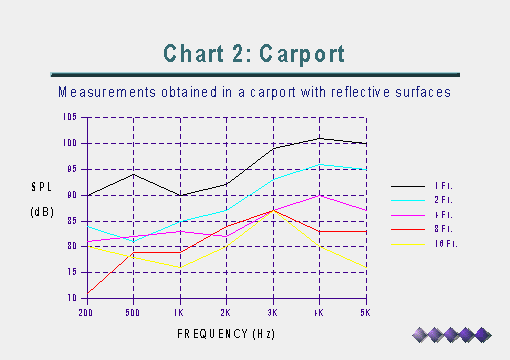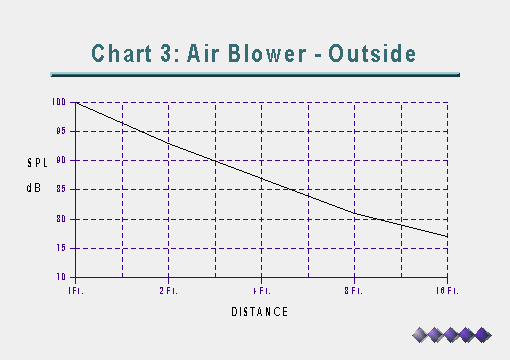|
Home (Top) Chart 1 - Outdoors |
 |
|
Home (This
page)
|
Simple Experiment to Measure Sound Propagation |
|
Home (Top) Equipment
|
EQUIPMENT
A audio pure tone generator is feeding an amplifier and speaker. The speaker is about eight inches in diameter in a wooden box. The digital dB meter is on a tripod and aimed at the speaker at 1, 2, 4, 8, & 16 ft. intervals. Initial setting of the gain on the amplifier was to give a 100 dB reading at 3KHz, at a distance of 1 ft., and the gain was not altered from this setting. The dB level of each tone at each distance was then measured. I performed the measurements two times. Chart 1 shows the results with the equipment set up outside away from any buildings. Chart 2 shows the results with the equipment set up in a carport, which is closed in on three sides with wood walls, a concrete floor and a plywood ceiling. Chart 3 just shows the dB level of an electric airblower
at 1, 2, 4, 8,
|
|
Home (Top) Chart 1 - Outdoors |
 |
|
Home (Top) Chart 2 - Indoors |
 |
|
Home (Top) Chart 3 - Airblower |
 |
|
Home (Top) Conclusions |
Conclusions
|
|
Home (Top) Photos
|
|